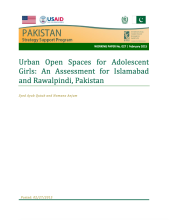Land Library
Welcome to the Land Portal Library. Explore our vast collection of open-access resources (over 74,000) including reports, journal articles, research papers, peer-reviewed publications, legal documents, videos and much more.
/ library resources
Showing items 1 through 9 of 19.Climate change affects poor and marginalized communities first and hardest.
This case study in the World Resources Report, “Towards a More Equal City,” examines transformative urban change in Ahmedabad, India, by analyzing the land pooling and readjustment mechanism called Town Planning Scheme (TPS).
More than half the villages of Madhya Pradesh and Chhattisgarh are affected by a peculiar issue of tenurial ambiguity called “orange areas.” This issue impacts nearly 1.2 million hectares and 1.5 million, largely poor, landless and tribal families, that depend on these lands for food, fuel, fodde
Rapidly urbanizing Indian cities need mechanisms to ensure that land is acquired, planned, and serviced with adequate infrastructure and social amenities, to prevent the occurrence of haphazard urban expansion and under-provisioned inner-city areas.
Urban open spaces are valued for their health, social, economic, and environmental benefits. Outdoor physical activity is important for the wellbeing of youth, while playfulness is crucial for creativity and innovation.
Almost two decades have passed since China first enacted legislation to protect farmland from conversion to nonagricultural use.
Strong economic growth in urban areas has not led to rapid urbanization in Ethiopia, possibly as a result of prevailing land tenure policies.
In comparison to other African countries, Ethiopia has a low urbanization rate. According to the World Bank World Development Report (WDR) 2009, Sub-Sahara Africa is 30% urbanized, whereas Ethiopia is only 10.9% urbanized.








